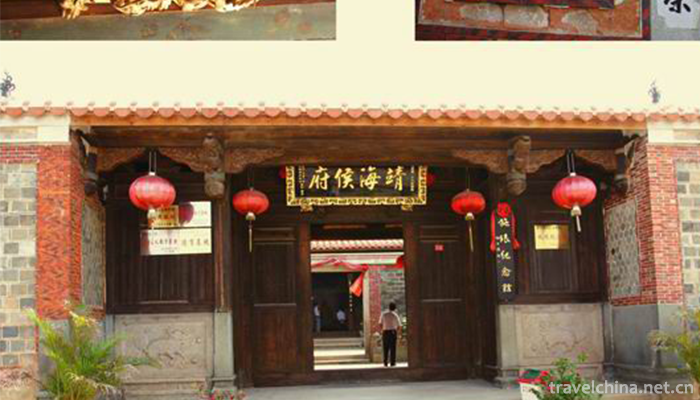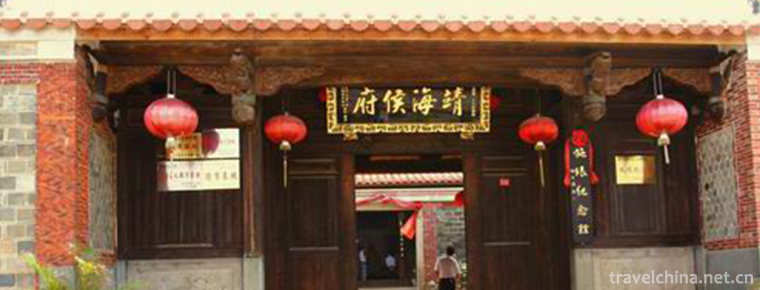Construction Techniques of Traditional Residential Buildings in Southern Fujian
Construction Techniques of Traditional Residential Buildings in Southern Fujian
South Fujian residential building technology is a unique traditional architectural technology originating in Quanzhou, which began in Tang and Five Dynasties, is the mainstream of ancient architectural technology in South Fujian, and spread in Quanzhou, Zhangzhou, Xiamen, Taiwanese, Hong Kong, Macao and Southeast Asia in the cultural circle of South Fujian.
The official Dacuo, commonly known as the "Palace Rise", is the most typical type in Quanzhou. It can be seen everywhere in the overseas Chinese hometown of Quanzhou. Its representative works include the ancient residence of Cai's family in Nan'an, a national cultural relic protection unit, and the former residence of Yang A Miao, a cultural relic protection unit in Fujian Province.
brief introduction
What is "Building Skills of Minnan Residential Buildings"
Southern Fujian dwelling belongs to a school of traditional Chinese courtyard dwelling. It is a type of dwelling with the most advanced material use and structural technology, the most abundant constituent factors, the most complex level of "ritual" and the most diverse decoration.
The construction techniques of folk houses in southern Fujian are divided into big wood work, small wood work, tile work, brick and stone work, paint work, color painting, stacking and cutting work, among which big wood work is the most important. Craftsmen are also classified and divided according to their types of work, with large carpenters as the core.
characteristic
This technique originated in Quanzhou and is the mainstream of ancient architectural techniques in southern Fujian.
Morning Post News (reporter Zhang Suping) Quanzhou Nanyin, Quanzhou Li Yaobao carved paper has been selected into the world's "non-heritage" list, but little known is that the Quanzhou Museum initiated the election of the Southern Fujian residential construction skills are also included in the world's "non-heritage"!
Reporters learned yesterday that from August 19 to 20, China was selected as the UNESCO "intangible cultural heritage of mankind" project certification ceremony and Protection Forum was held in Beijing. Chinese traditional wooden structure construction techniques are listed in the "non-legacy" list of the world, and southern Fujian residential construction techniques, as one of its three major skills, are also included.
Yao Hongfeng, renovator of the International Ancient Architecture of Quanzhou Cultural Relics Conservation Research Center, said that the traditional Chinese wooden structure construction technology is "bundled" together with the construction technology of three provinces in China and jointly declared. Fujian Province is one of them, and Quanzhou is the only city in Fujian Province to participate in the merger.
In fact, the declaration work started as early as 2008. "We take Yang'a Miao Residence as a representative building, and have produced relevant text, pictures and video materials to introduce the building techniques of Minnan Residence." Chen Jianzhong, curator of Quanzhou Museum, said that the building skills of folk houses in southern Fujian originated from Quanzhou, and the staff took Yang A Miao's building skills as a model to "elaborate" the skills. This skill is a sub-item of "Chinese traditional wooden structure construction skill". Perhaps it caused this skill to be selected into the world "non-legacy", but for a long time "raised in the boudoir people do not know".


-
1.Qinhuangdao Shanhaiguan Scenic Area
Shanhaiguan, also known as Yuguan, Yuguan and Linluguan, is located 15 kilometers northeast of Qinhuangdao City, Hebei Province
Time 2018-11-24 -
2.Three Parallel Rivers of Yunnan Protected Areas
The three rivers running side by side are Jinsha River, Lancang River and Nujiang River, three rivers originating from the Qinghai-Tibet Plateau, running 170 kilometers from north to south in Yunnan P
Time 2018-12-19 -
3.Olympic Rowing Canoeing Park
Beijing Olympic Water Park, also known as Shunyi Water Park, is located in Chaobai River, Mapo Township, Shunyi District, Beijing. Its building area is 31850 square meters, and the number of seats is
Time 2019-01-02 -
4.Dazhushan Scenic Area
Dazhushan Scenic Area is located on the southeast coast of Huangdao District. Its main peak is 486 meters with a total area of 65 square kilometers. It is mainly divided into Shimen Temple Scenic Area
Time 2019-01-08 -
5.Zhoucun Ancient Mall
Zhoucun Ancient Mall, also known as Street, is located in Zhoucun District, Zibo City, Shandong Province. The main road of Shandong Province, Jiqing Expressway
Time 2019-03-20 -
6.Production Techniques of Silk in Chengdu
Silk is the most distinctive traditional gold and silver handicraft of the Han nationality in Chengdu. This metal craft has a history of more than 1700 years. It has reached a very high artistic level
Time 2019-04-18 -
7.Danzhou tune
Danzhou tune is a traditional folk song which only spreads in Danzhou of Hainan Province and has a unique regional style. It is sung in Danzhou dialect with a lively rhythm
Time 2019-04-25 -
8.Gold lacquer inlay decoration technique
Gold lacquer inlay decoration technology, Beijing local traditional handicraft, one of the national intangible cultural heritage.
Time 2019-05-07 -
9.Baisha Xile of Naxi Nationality
Naxi Baisha Xile is also known as "Xiaoli at breaking time", "Xiaoli at breaking time", "Xili at breaking time", "Xili at breaking time" and "Xie Li at bre
Time 2019-06-06 -
10.Tang Sancai Techniques
Tang tri coloured firing technique originated from the early Tang Dynasty. The tri coloured glazed pottery of Tang Dynasty, as the essence of traditional Chinese art in the Tang Dynasty, has a history
Time 2019-06-18 -
11.Violin Opera
Violin opera, originally a flower-drum opera in Yueyang, Hunan Province, spread to Chongyang, Tongcheng and other places around the end of the Qing Dynasty and renamed "Violin Opera", is a u
Time 2019-06-19 -
12.University Of Science and Technology Beijing
Beijing University of Science and Technology was established in 1952 by the Department of Mining and Metallurgy of 6 famous universities in China, such as Tianjin University (formerly Beiyang Universi
Time 2019-09-06